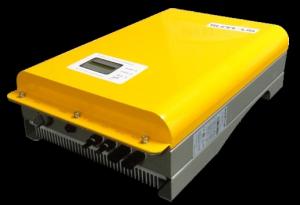Refusol Solar Inverter
Refusol Solar Inverter Related Searches
Refu Solar Inverter Solar Solar Inverter Solar Rechargeable Inverter Residential Solar Inverter Solar Rooftop Inverter Rec Solar Inverter Renovo Solar Inverter Inverter Solar Inverter Solar Cell Rooftop Solar Inverter Solar Energy Inverter Solaris Solar Inverter Reactive Power Solar Inverter Solar Converter Inverter Freesun Solar Inverter Sun Solar Inverter Easun Solar Inverter Solar Battery Inverter Rssi Solar Inverter Power Solar Inverter Solar Electric Inverter Battery Solar Inverter Inverter For Solar Buy Solar Inverter Reliable Solar Inverter Inverter Battery Solar Inverter Replacement Solar Power Inverter Solar Smart Inverter Solar Renogy Solar InverterRefusol Solar Inverter Supplier & Manufacturer from China
Refusol Solar Inverter is a high-quality product designed for efficient energy conversion in solar power systems. These inverters are engineered to optimize the performance of solar panels, converting the generated direct current (DC) into alternating current (AC) that can be used by various electrical appliances. The Refusol Solar Inverter is widely used in residential, commercial, and industrial settings, making it an essential component for harnessing solar energy and reducing reliance on traditional power sources. With its robust design and advanced technology, this inverter ensures reliable power supply and maximizes the return on investment for solar energy projects.In various application scenarios, the Refusol Solar Inverter stands out for its ability to handle different solar power capacities and configurations. It is particularly useful in off-grid systems, where it plays a crucial role in managing energy storage and distribution. Additionally, it is employed in grid-tied systems to regulate the flow of electricity between the solar panels and the power grid, ensuring a stable and continuous power supply. The versatility of the Refusol Solar Inverter makes it a popular choice among solar energy enthusiasts and professionals alike.
Okorder.com is a leading wholesale supplier of Refusol Solar Inverter, boasting a large inventory that caters to the diverse needs of customers worldwide. As a reliable source for this product, Okorder.com ensures that customers receive top-quality inverters at competitive prices. With a commitment to customer satisfaction, Okorder.com offers efficient shipping and excellent after-sales support, making it the go-to destination for those seeking to invest in Refusol Solar Inverters for their solar power projects.
Hot Products

















































